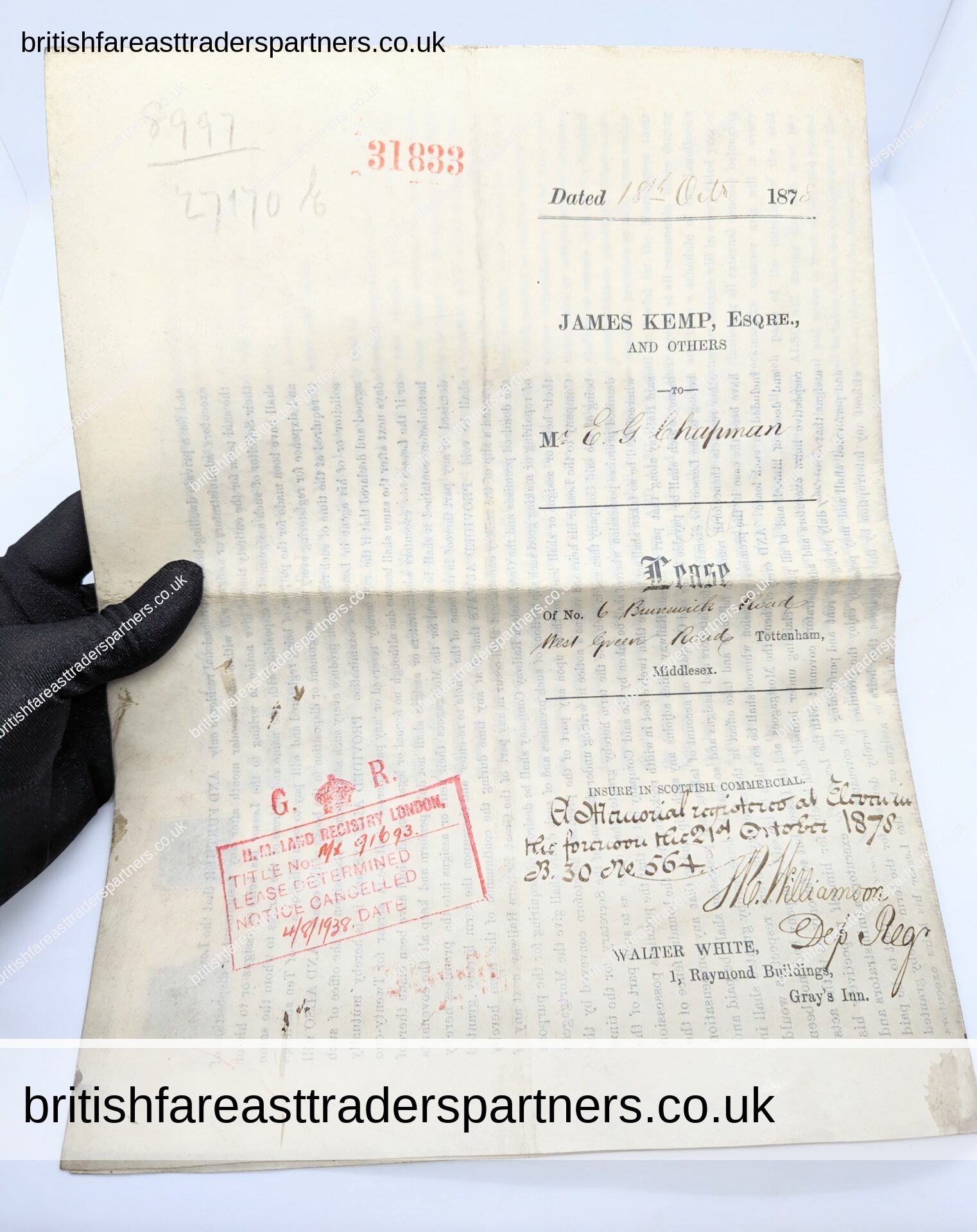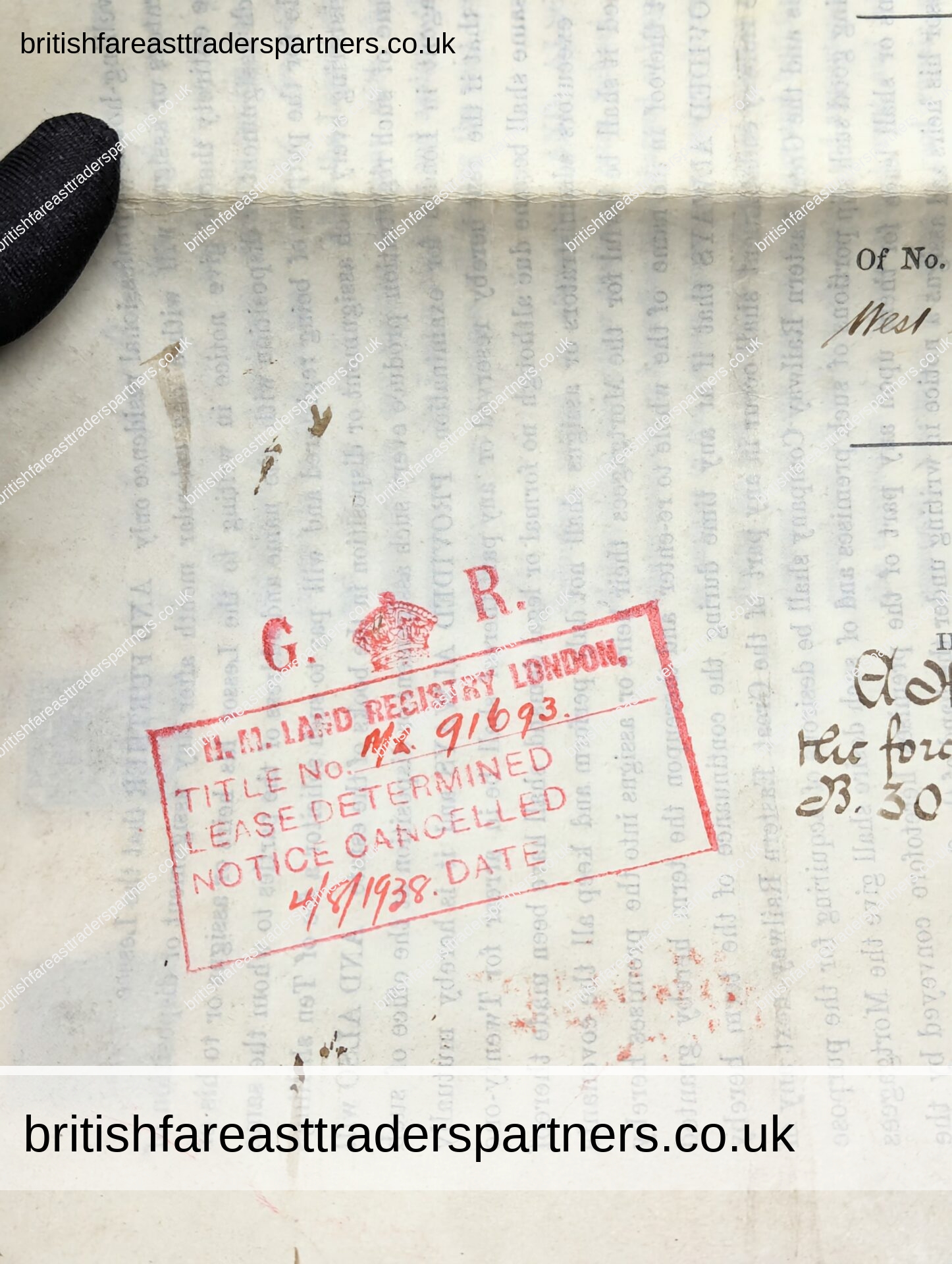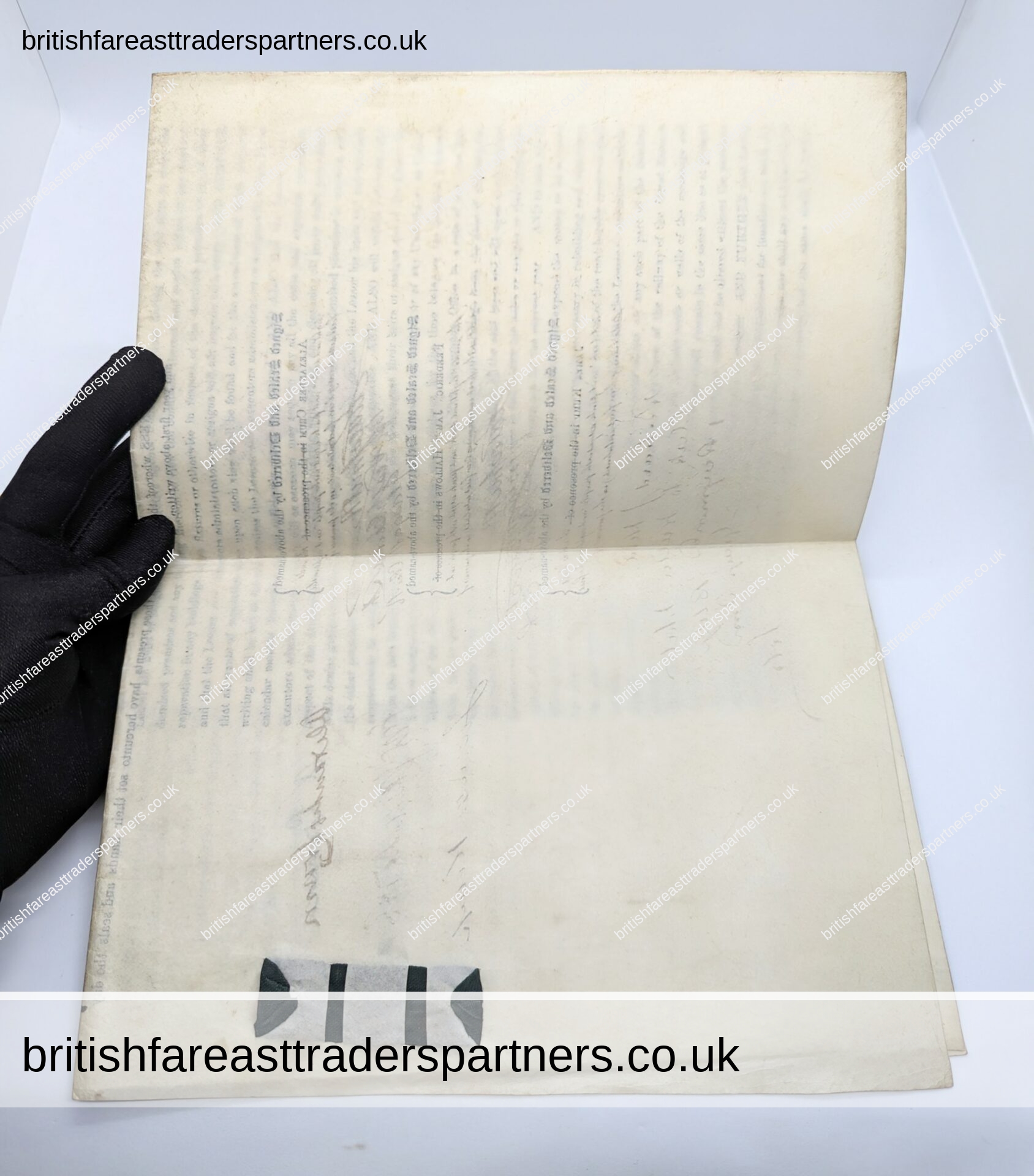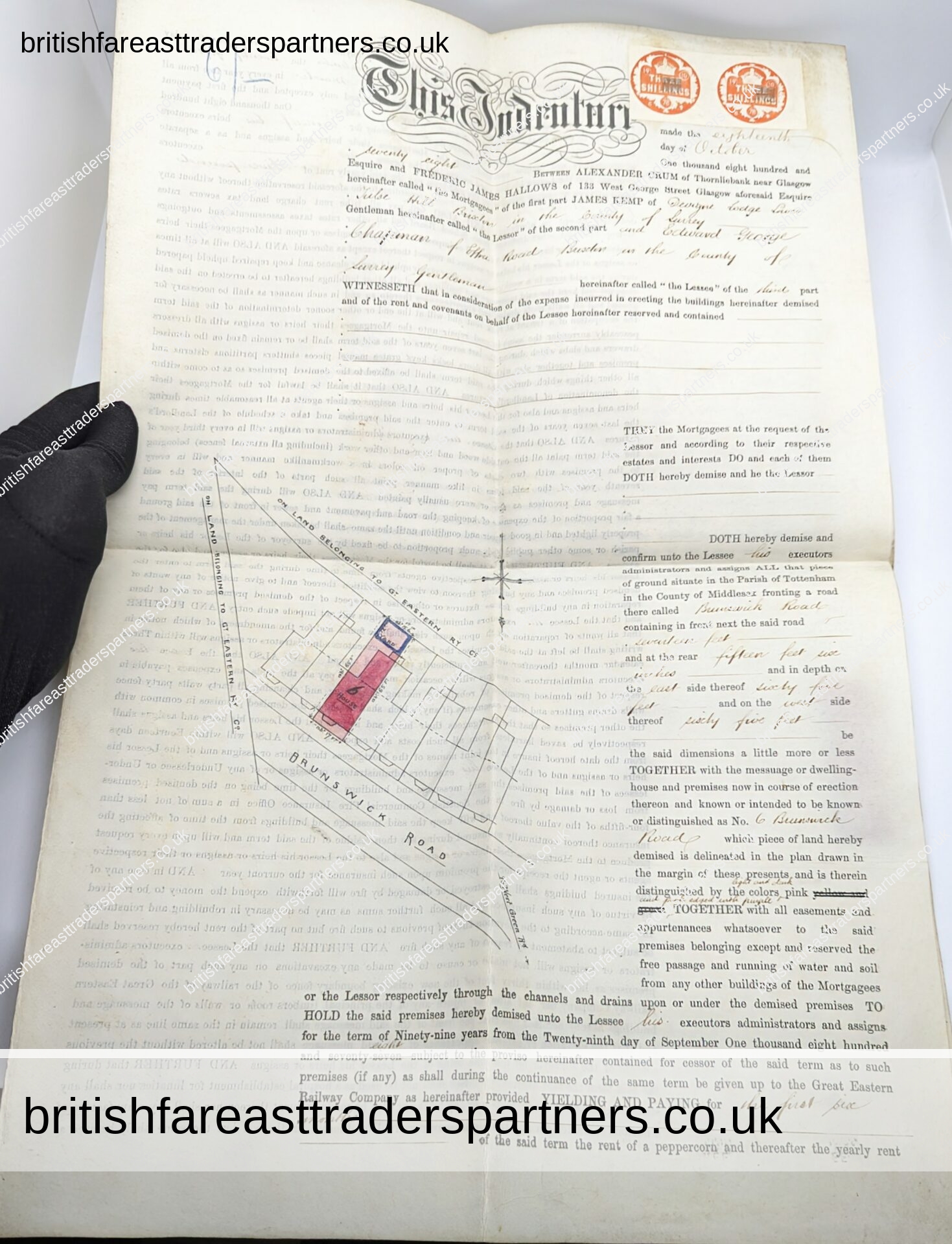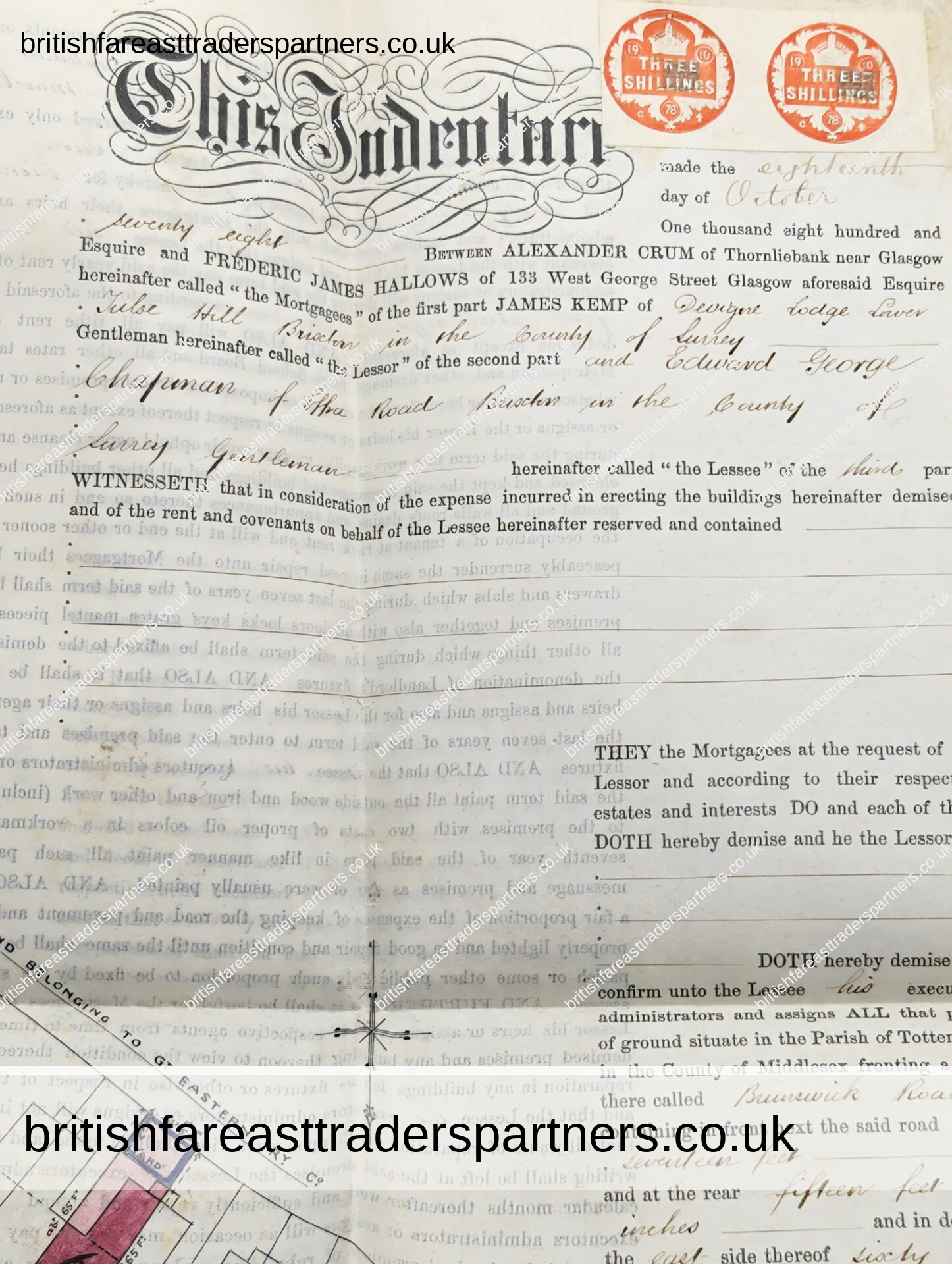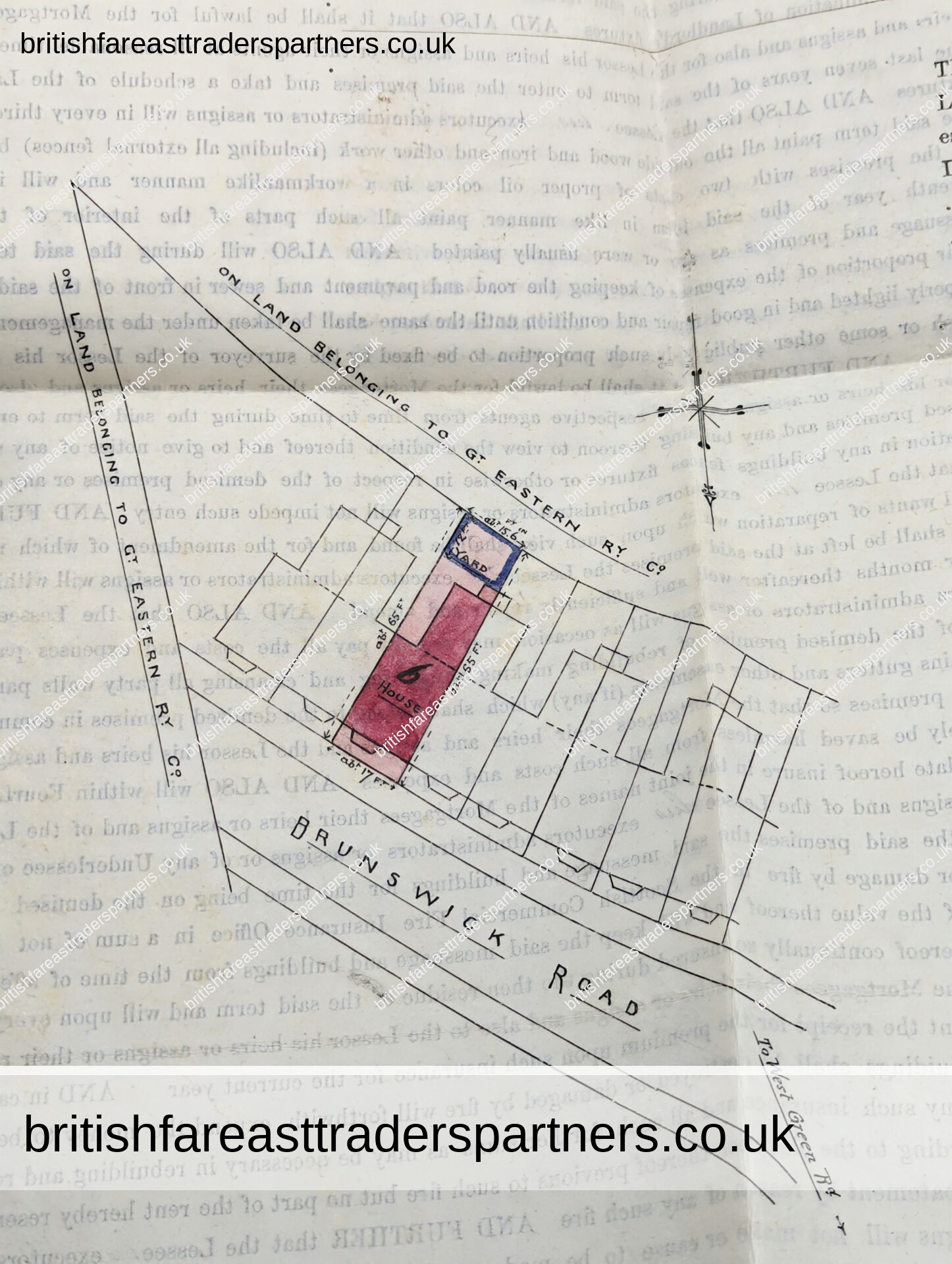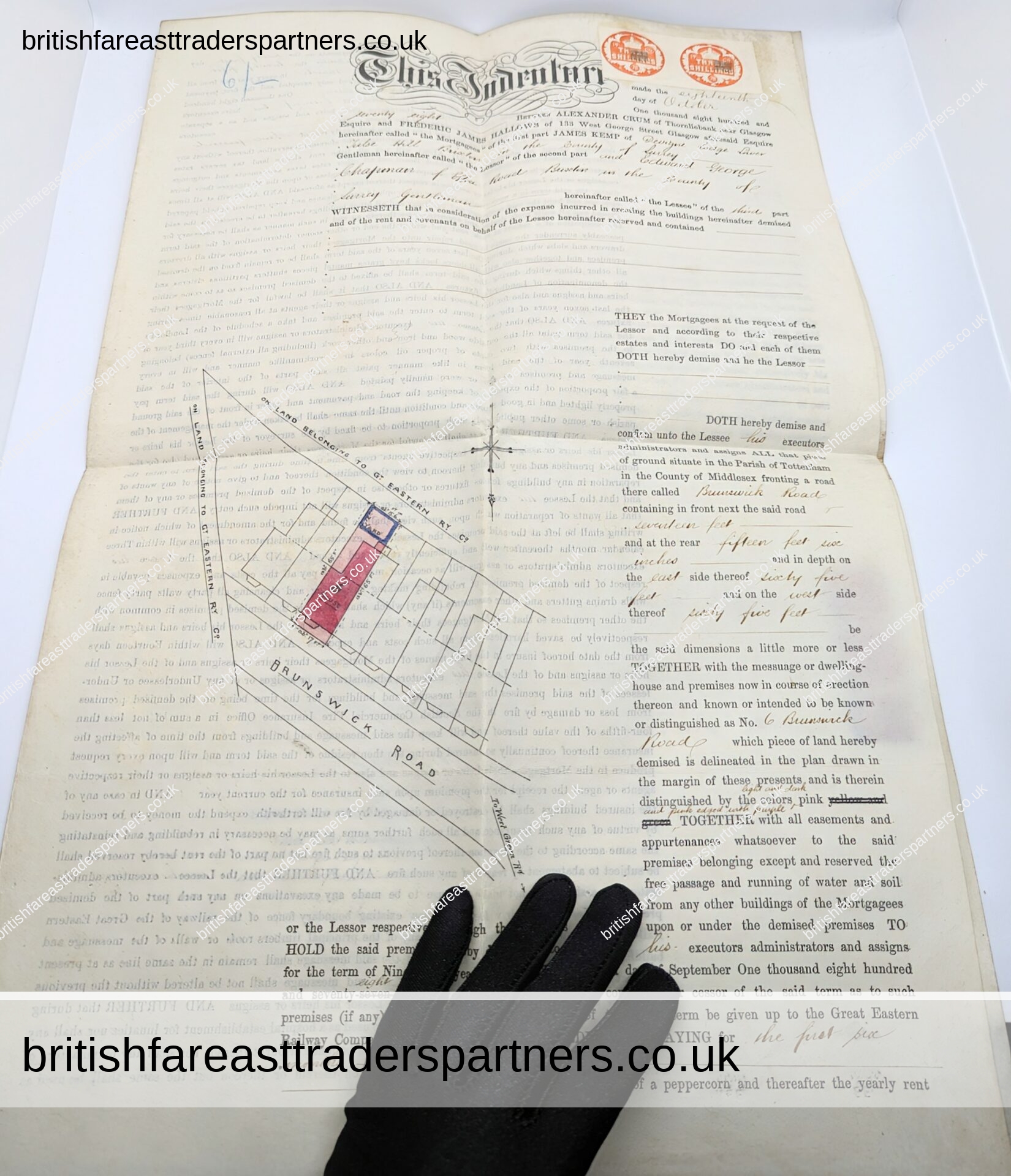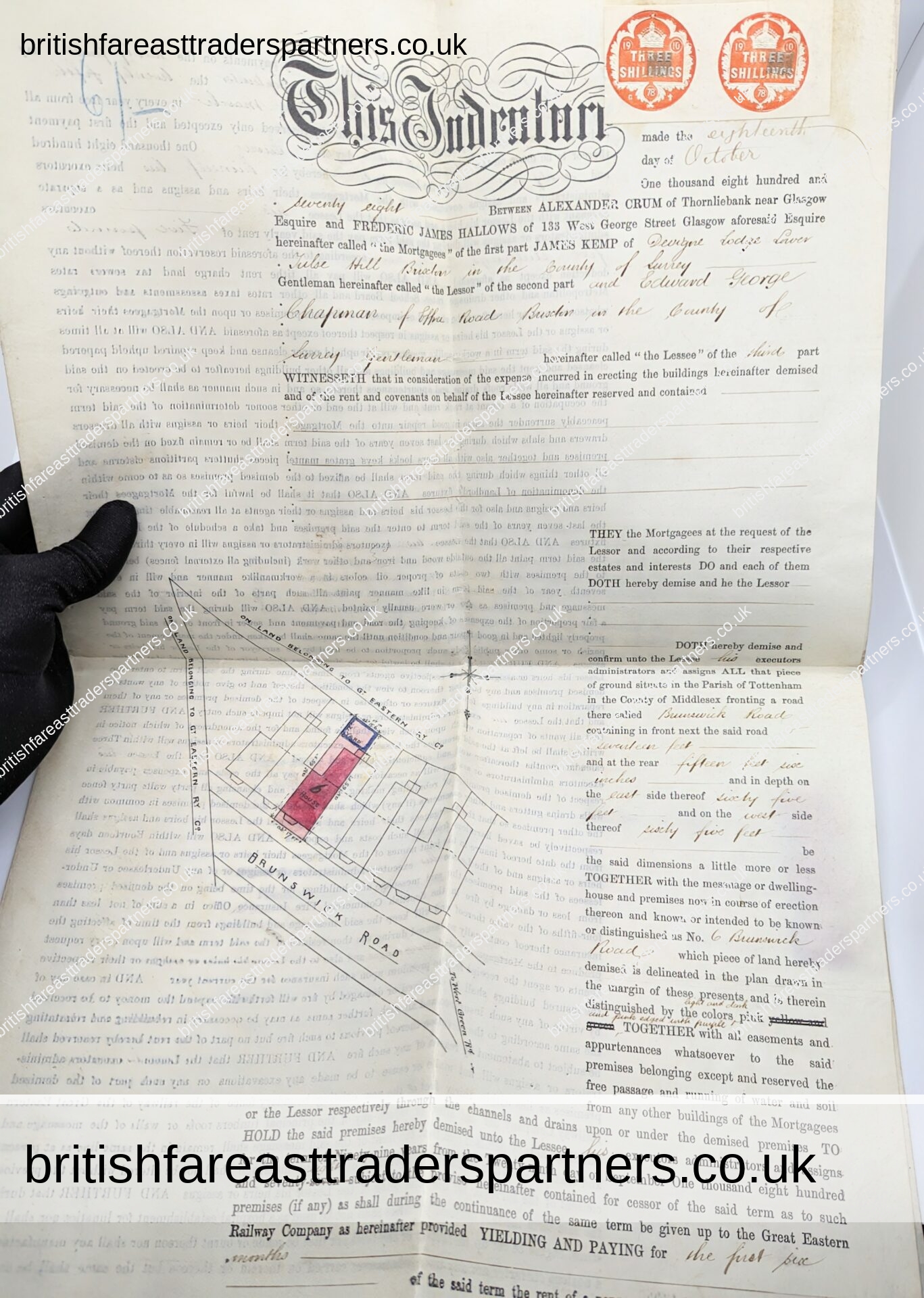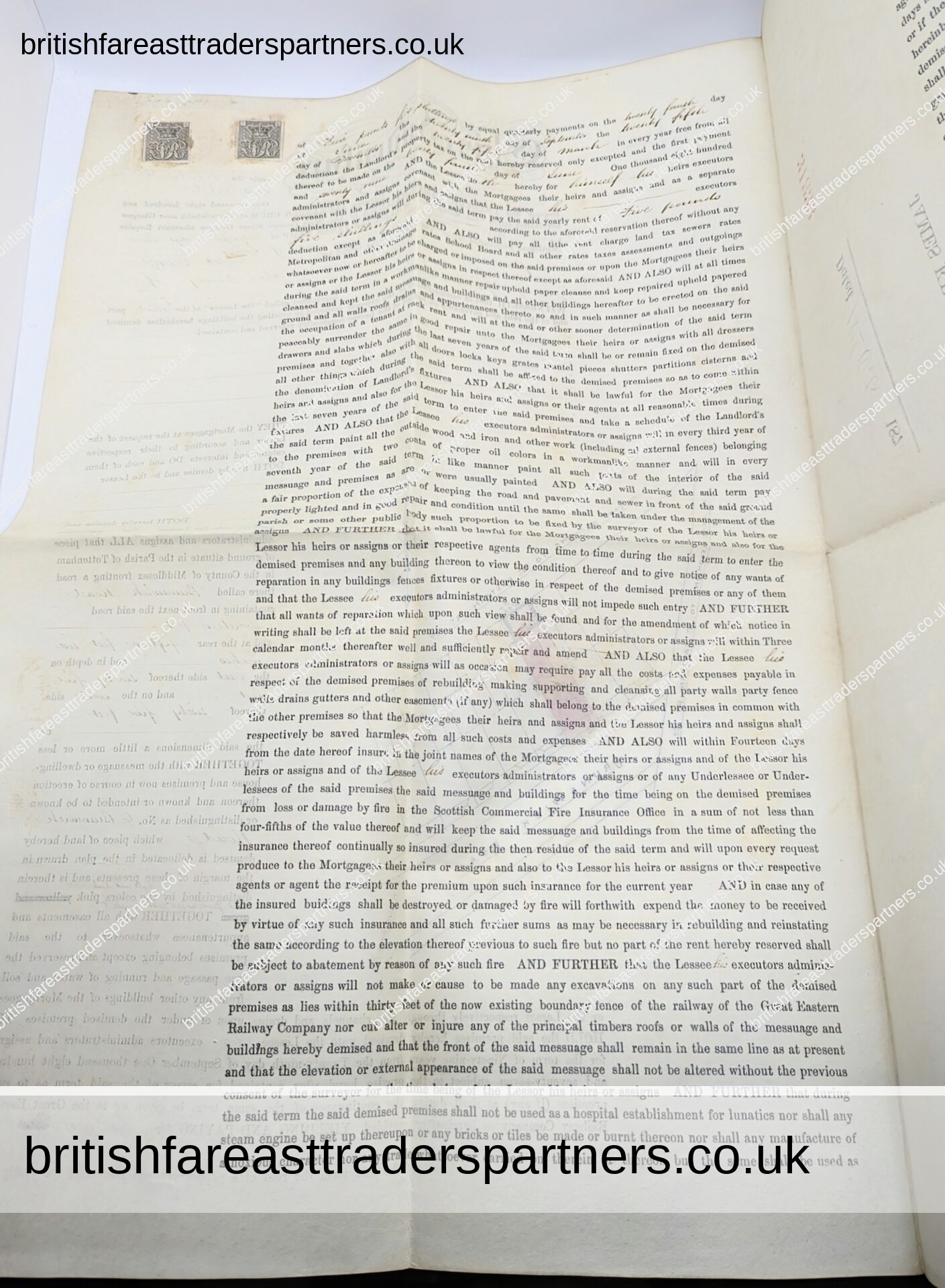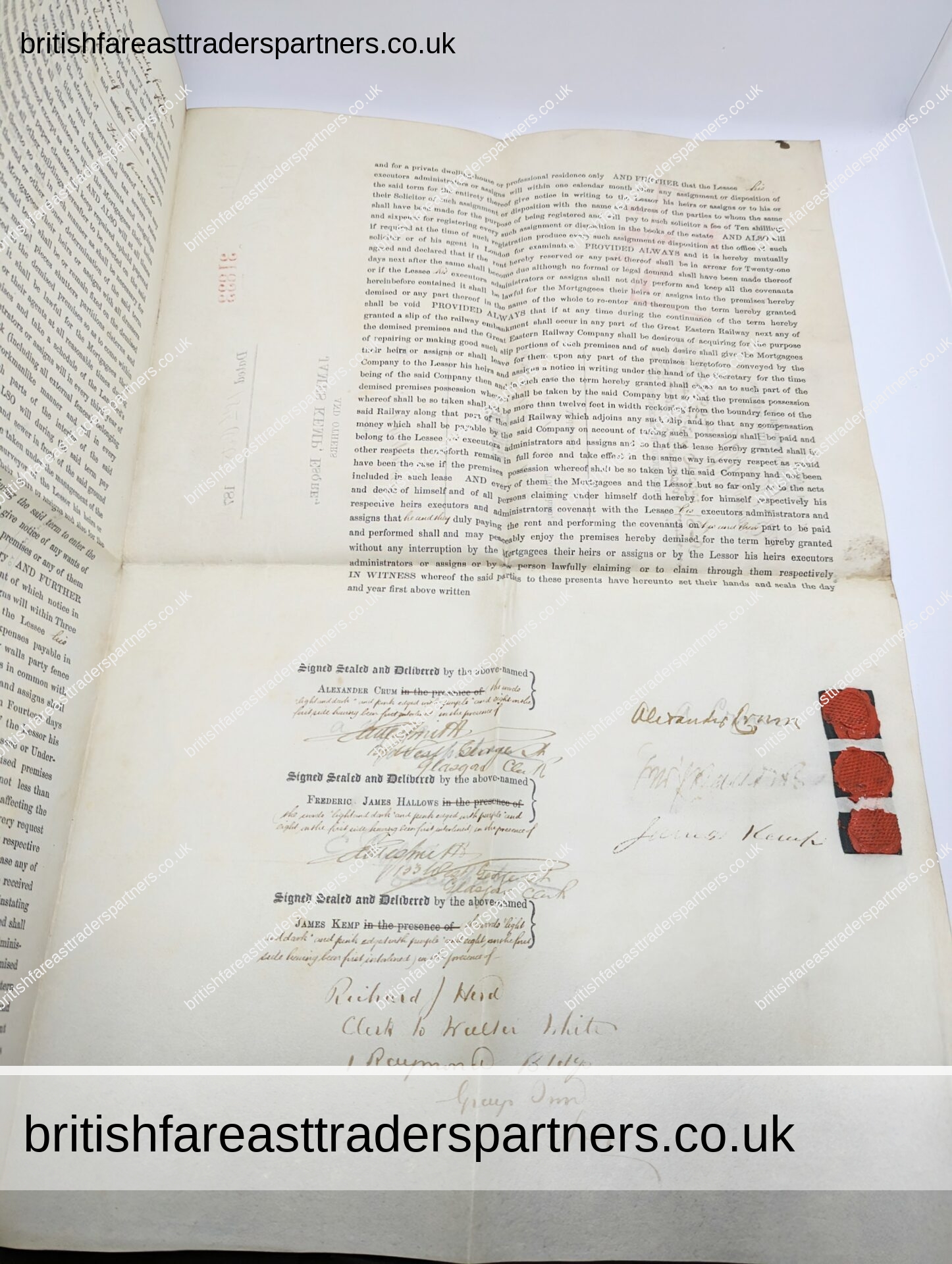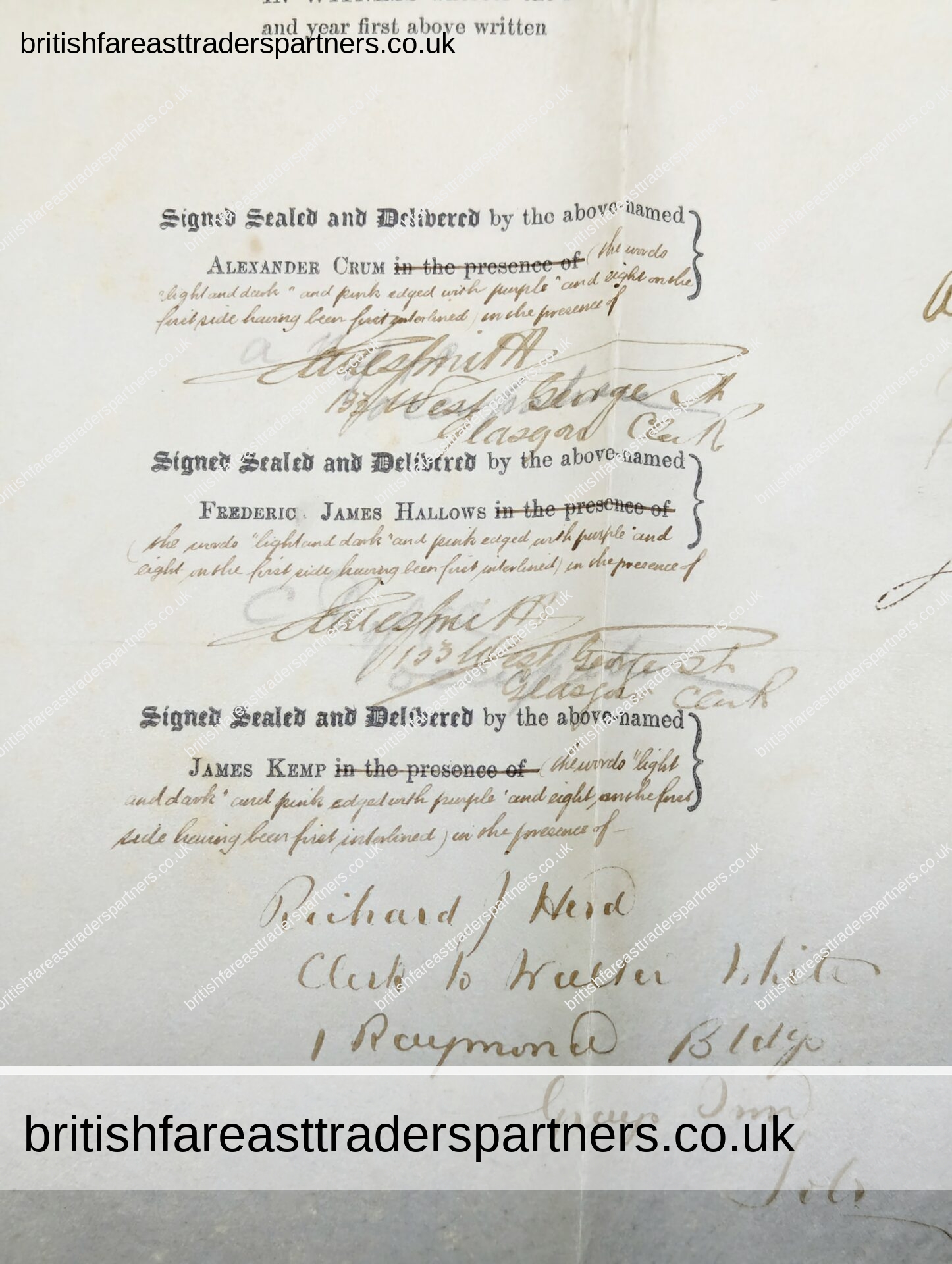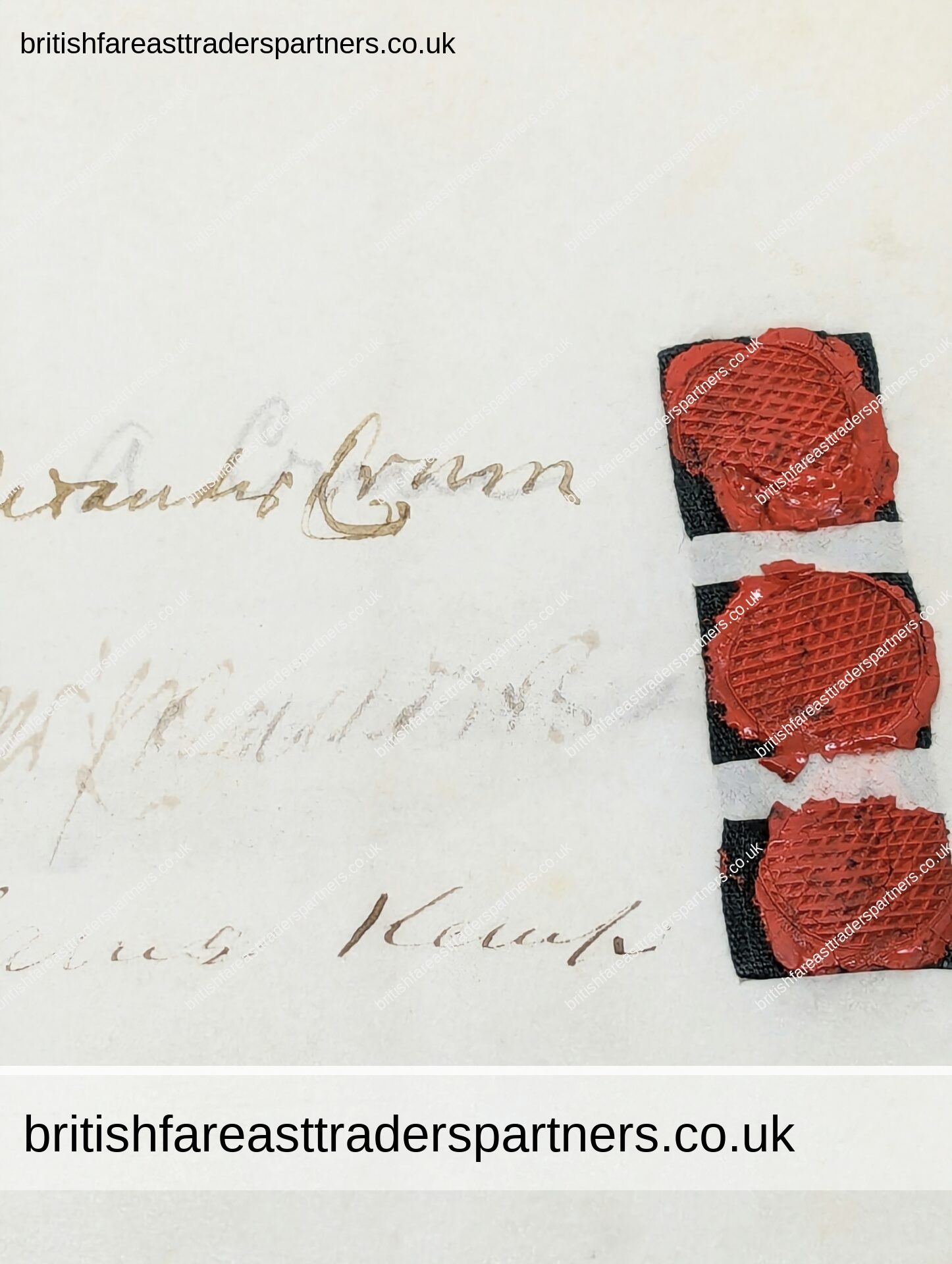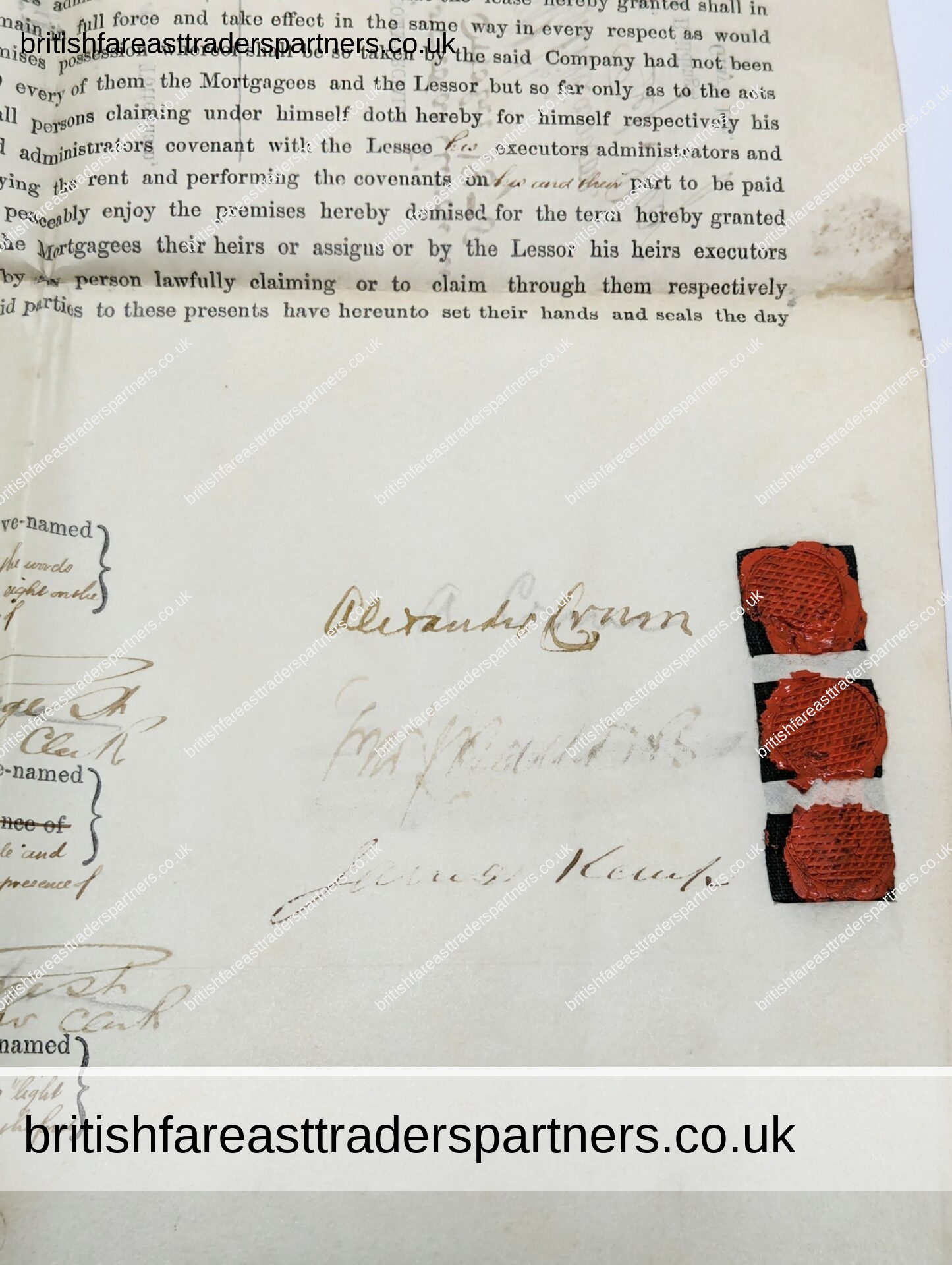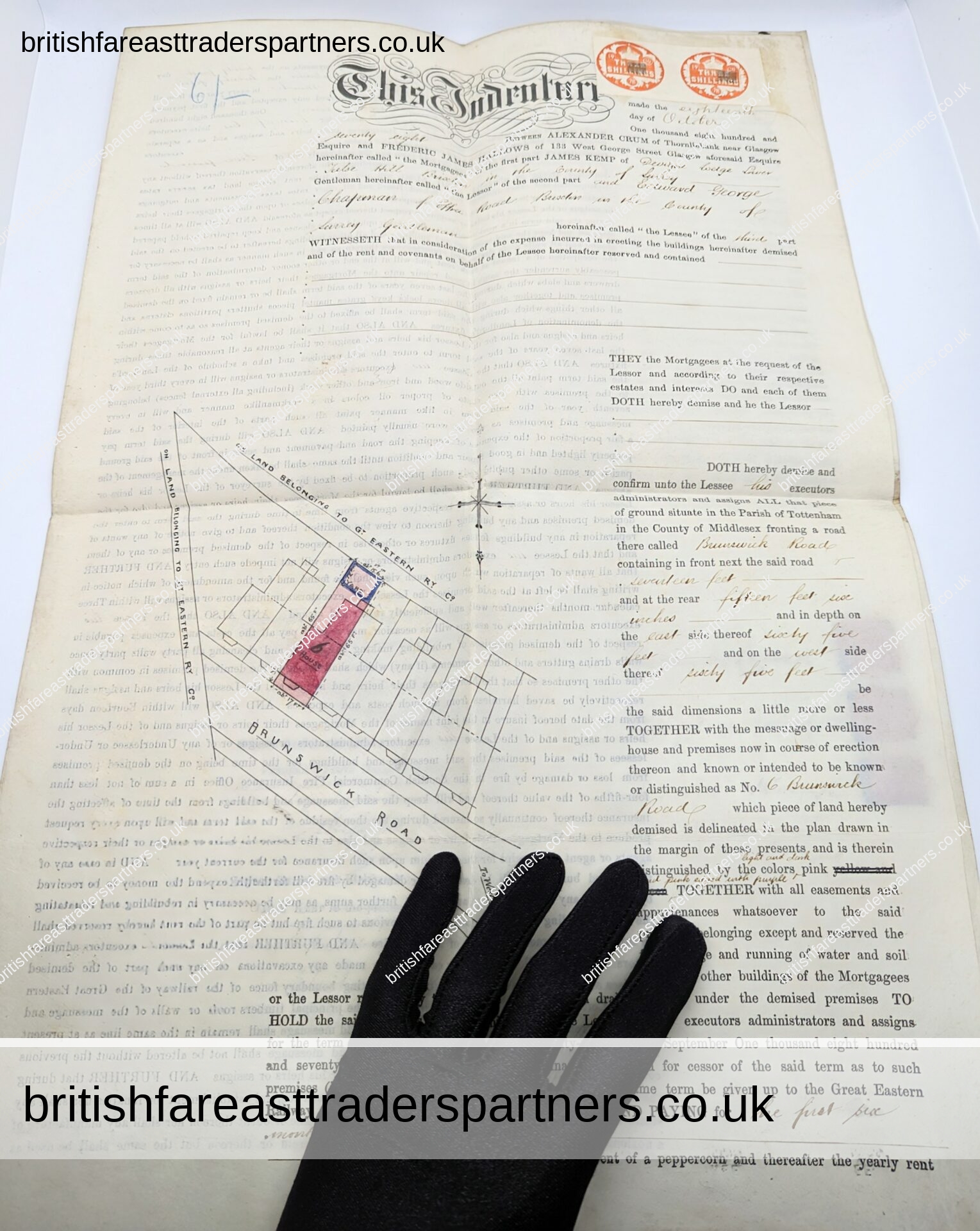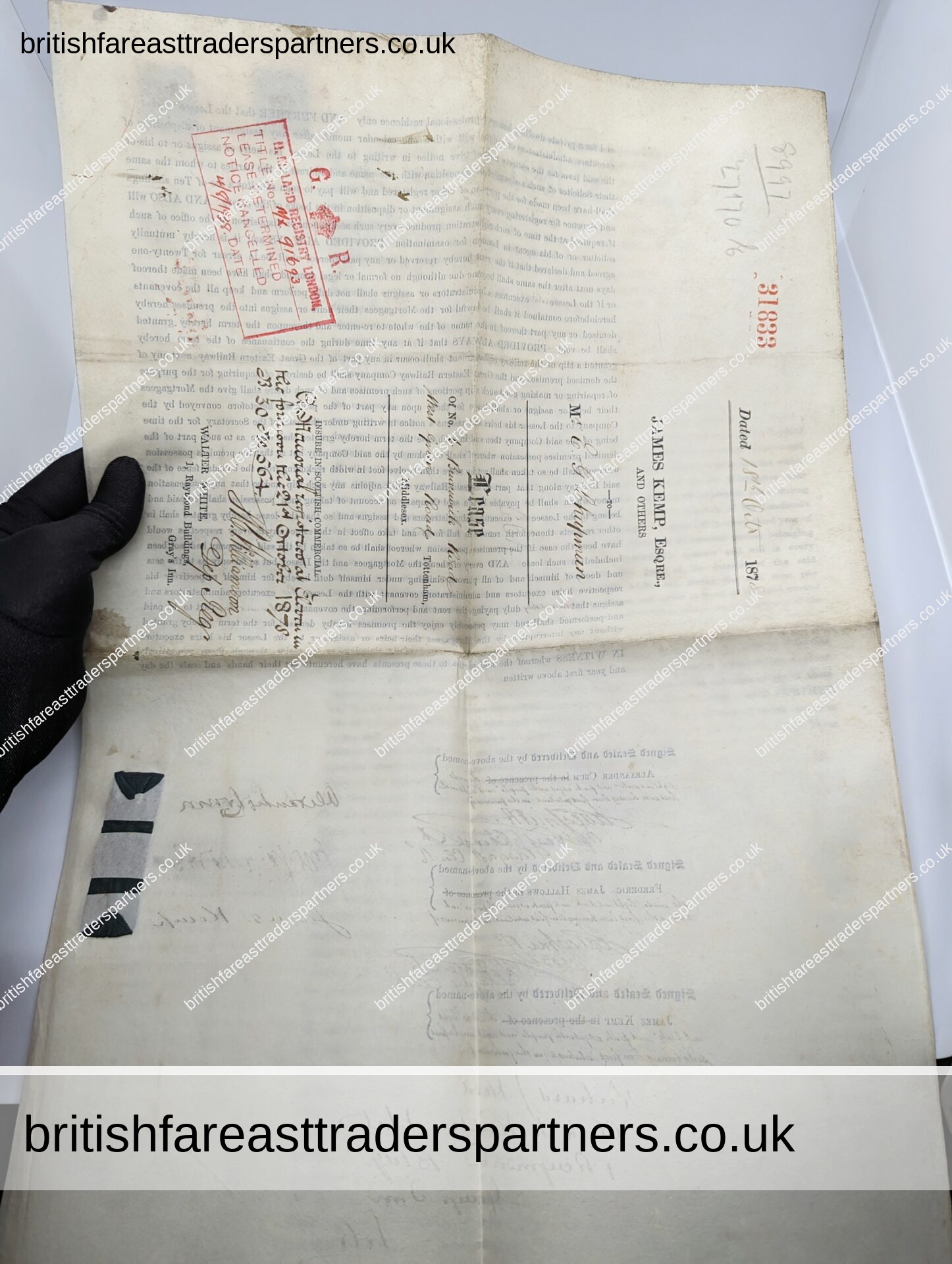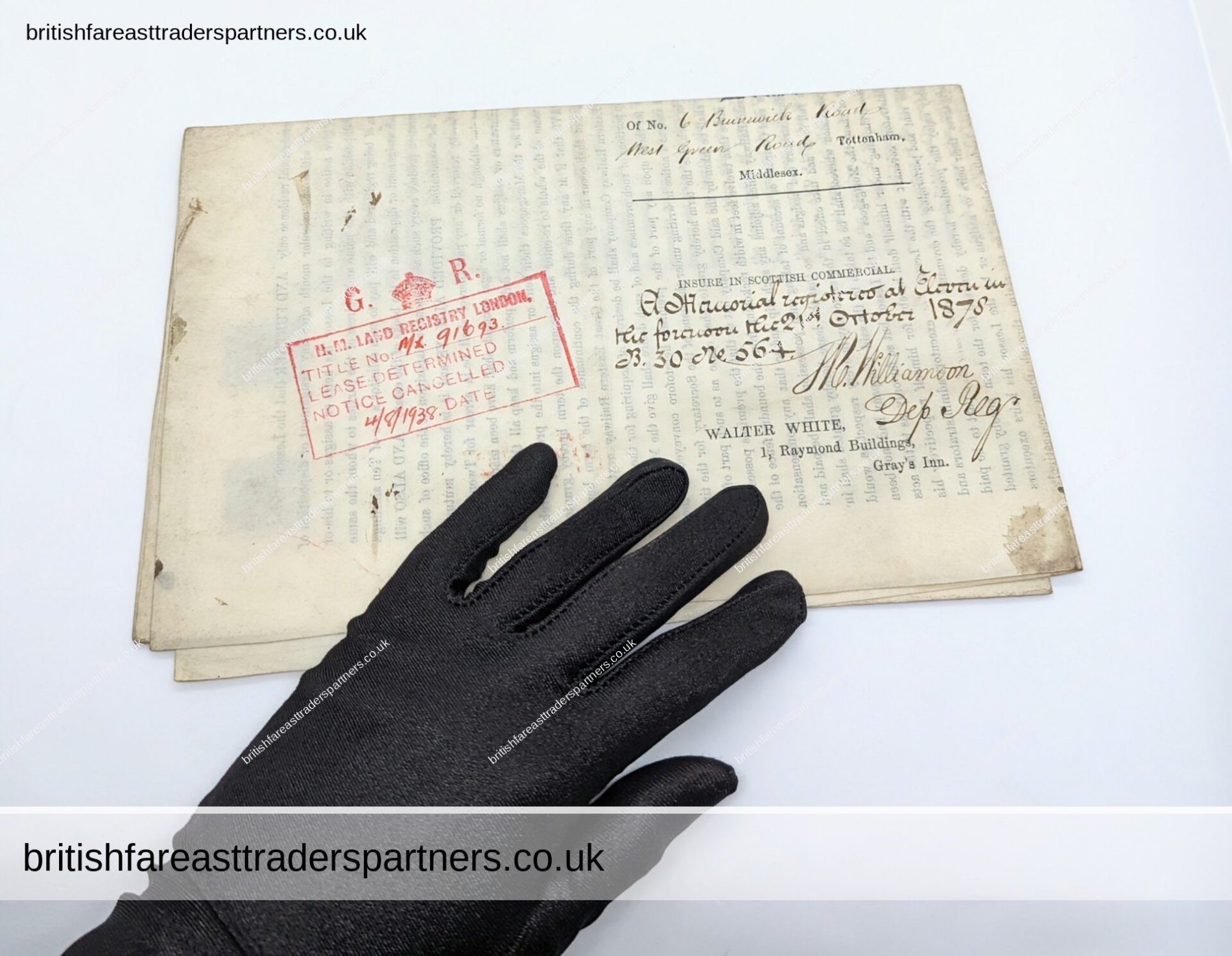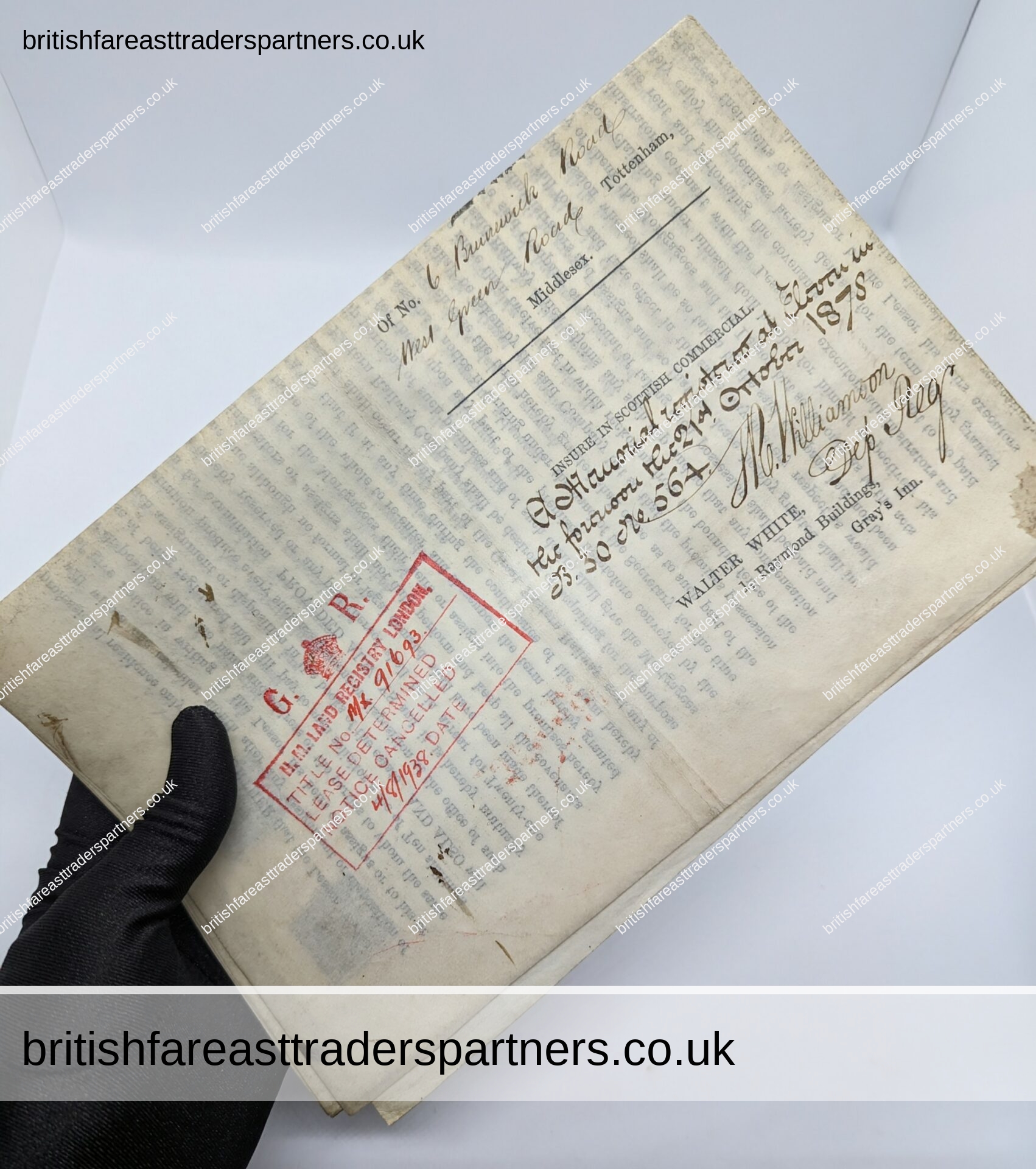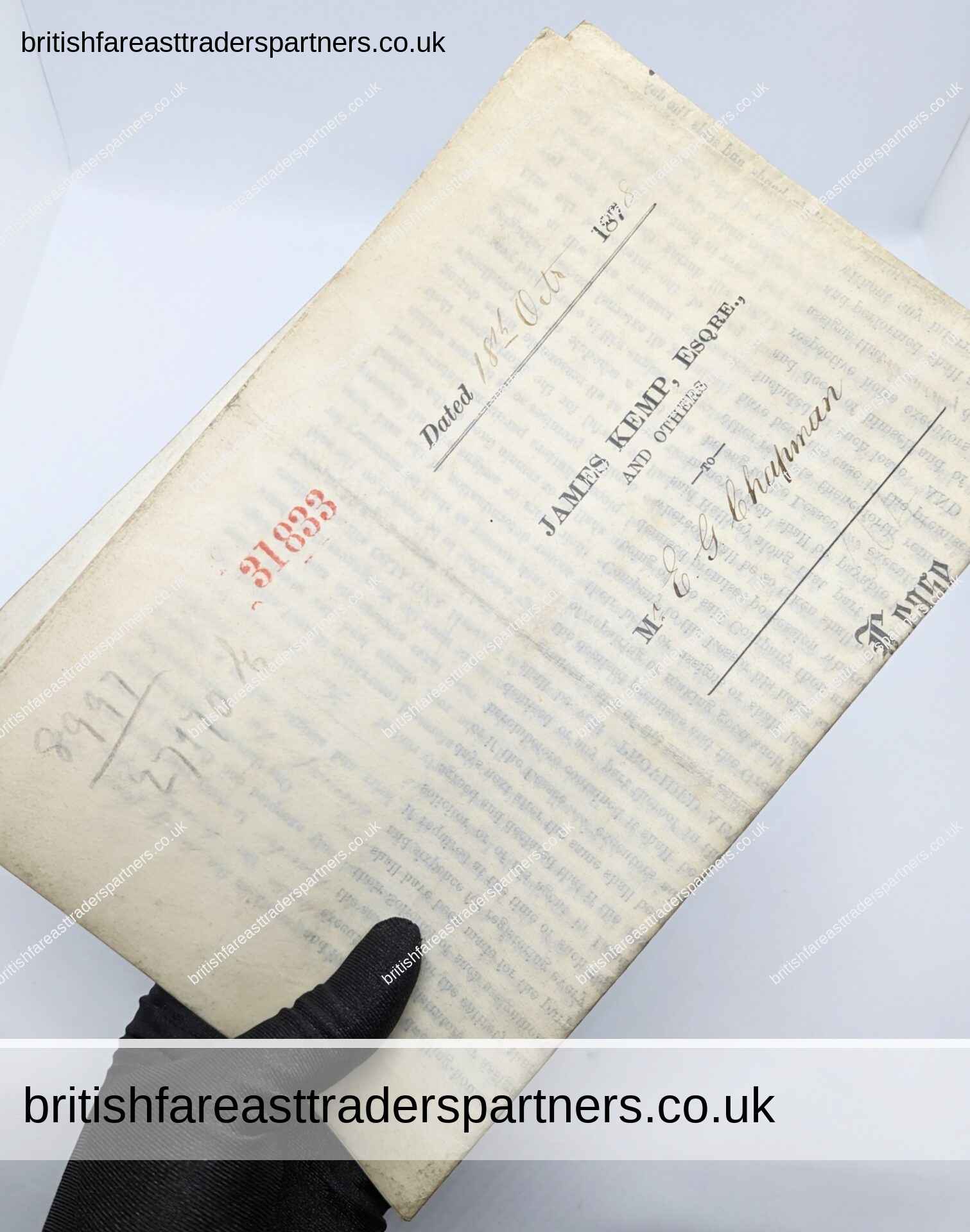Last Updated on: 19th March 2024, 08:06 pm
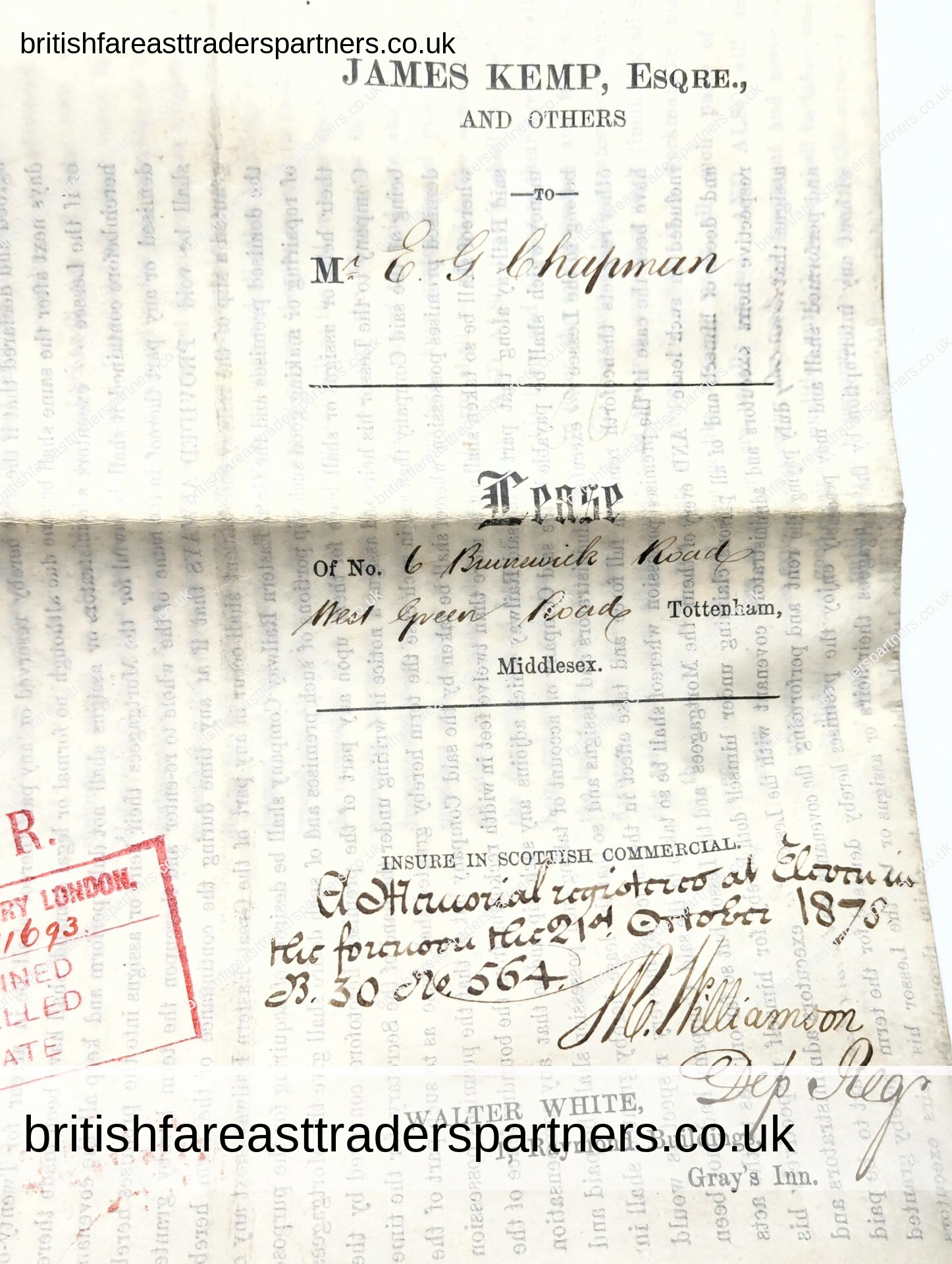
- britishfareasttraderspartners_admin
- ANTIQUE, BRITISH, COLLECTABLES / COLLECTIBLES, CULTURE, DOCUMENTS, ENGLAND, EPHEMERA, ETHNOGRAPHIC, HERITAGE, HISTORY, HOBBIES / PASTIMES, INSPIRE ME, LONDON, REAL ESTATE / PROPERTY, UNITED KINGDOM, VICTORIAN, VINTAGE
- 1878, Antiques, British, Collectables / Collectibles, Documents, England/ English, Gray's Inn (London), Indenture, Legal, London (England), United Kingdom, Victorian
1878 James Kemp Esq. to EG Chapman LEASE of 6 Brunswick Road TOTTENHAM Indenture
The 1878 indenture between James Kemp Esquire and E.G. Chapman for the lease of 6 Brunswick Road, West Green Road, Tottenham, Middlesex, is a document rich in historical value. This original Victorian Era artifact provides a tangible link to England’s past, detailing a property lease arrangement that involved prominent individuals and the Great Eastern Railway Company, hinting at the era’s industrial expansion and societal structures.
Measuring 12 1/2 by 19 inches, the indenture is not merely paper but a canvas illustrating the meticulous legal procedures and social contracts of the time. The involvement of esteemed parties such as James Kemp and Mr. E.G. Chapman reflects the document’s significance and the caliber of transactions during this period.
The legal text is flanked by two Three Shillings stamps from 1910, implying a legal transaction requiring government revenue—a common practice of legal documents that were meticulously stamped to indicate the payment of duty.
The indenture’s connection to the H.M. Land Registry, with a title number specified and notes indicating the determination of the lease and cancellation notice in 1938, signifies its life beyond the initial agreement, painting a picture of property tenure and changes over 60 years.
Furthermore, the presence of signatures such as Alexander Crum and Frederic James Hallows, alongside a clerk to Walter White, demonstrates the formality with which property transactions were conducted. The wax seals and signatures validate the document’s authenticity and the importance of legal formality.
For collectors, historians, or legal aficionados, this indenture is not just a relic but a narrative piece that conveys the story of Victorian England’s societal norms, legal practices, and economic activities. It can be a centerpiece in a collection of legal history, a display in a law firm’s office, or a treasured artifact in a personal library, serving as a window into the lives and transactions of the past.
The mention of the Great Eastern Railway Co. in this indenture is not merely a footnote in the document; it encapsulates the spirit of Victorian England’s industrial might and the railway’s pivotal role in shaping the economic landscape of the era. For the connoisseur and historical aficionado, it’s a profound reminder of a transformative period when railways were the arteries of commerce and expansion.
This indenture whispers tales of the past, where the Great Eastern Railway Co. not only symbolised the zenith of Victorian ingenuity but also served as a beacon of progress, connecting towns and influencing the development and value of properties like that of 6 Brunswick Road. Its presence in this document underscores the intricate web of industry, infrastructure, and real estate—a tapestry that detailed historians and researchers find invaluable.
Equally compelling is the association with Gray’s Inn, London. A historic bastion of legal education and practice, Gray’s Inn stands as one of the four Inns of Court, which have housed and trained barristers in England since the 14th century. That the clerk to Walter White, an occupant of 1 Raymond Buildings within Gray’s Inn, was involved in sealing and delivering this indenture ties the document to the illustrious legal traditions of England.
For researchers of people, properties, and companies, this indenture provides a multidimensional view of London and beyond. It offers insight into the legal proceedings that underpinned property transactions, the stature of those involved, and the vibrancy of Victorian London’s legal district. Collectors of such documents prize them for the stories they hold—a record of the symphony of life in Victorian England, where every legal document, property, and company played a critical note in the grand historical opus.
This indenture is not just a piece of history; it’s a piece of Victorian England itself. It’s a conduit through which one can experience the grandeur of the Great Eastern Railway’s impact, the reverence of Gray’s Inn’s legal authority, and the broader socio-economic milieu of the time. For the discerning individual, it’s a collector’s piece that transcends mere aesthetics; it’s a fragment of history that enables one to traverse time and witness the complexities and fascinations of an era that laid the foundations of the modern world.
Related posts:
- VINTAGE CERAMICS SUMMER / AUTUMN FRUITS FRUIT DISH / CUP / SUGAR BOWL BRITISH CERAMICS | COLLECTABLES | DECOR | TABLEWARES VINTAGE CERAMICS SUMMER / AUTUMN FRUITS FRUIT...
- SOUTHEAST of ENGLAND among the TOP 5 MOST SUSTAINABLE REGIONS in the UK | SUSTAINABILITY | RENEWABLE ENERGY | GREEN ENERGY | ENGLAND | UNITED KINGDOM | ENVIRONMENT SOUTHEAST of ENGLAND among the TOP 5 MOST...
- ANTIQUE ROCOCO c. 1745 VINCENNES (FRANCE) ‘Gobelet a la Reine’ DEEP SAUCER ANTIQUE ROCOCO c. 1740 to 1752 VINCENNES (FRANCE) DEEP SAUCER...
- AVON UK: CAMPAIGN 5 | MAY 2023 BROCHURE / CATALOGUE Flip- through SHOP with us with this immersive ONLINE SHOPPING EXPERIENCE as...
- VINTAGE 1950 “ACF- BRILL MOTORS COMPANY” STOCK SHARE CERTIFICATE VINTAGE STOCK / SHARE CERTIFICATE "ACF-BRILL MOTORS COMPANY" COLLECTABLE DOCUMENTS...
- VINTAGE PRINCESS DIANA (THE LADY DIANA SPENCER) & PRINCE CHARLES in CUNARD CRUISES MAGAZINE HISTORY | MEMORABILIA | FASHION | ROYALTY | SOCIETY | PERSONALITIES COLLECTABLES CHECKOUT HERE VINTAGE PRINCESS DIANA (THE LADY...
- ANTIQUE 1907 “The Industrial Missions Aid Society” LONDON INTEREST DOCUMENT 🌟🏛️ RARE GEM ALERT! Step into the past with the...
- VINTAGE / ANTIQUE CHRISTMAS GREETINGS CARD “A MERRY CHRISTMAS GREETING” E.H DAVIES ARTWORK LADY & CHILDREN WAITING FOR A HORSE-DRAWN CARRIAGE SNOWY WINTER SCENE PRINTED IN GREAT BRITAIN BRITISH | COLLECTABLES | PAPER & EPHEMERA GREETINGS CARD | CHRISTMAS VINTAGE / ANTIQUE CHRISTMAS GREETINGS CARD “A MERRY...
- 31st March 1902 ANTIQUE Billhead Invoice G Northcroft Esq. 115 Harley Street LONDON To GEORGE PULMAN & SONS Ltd Contractors to Public Offices Manufacturing Stationers, Printers, Account Book Makers 24, 25, & 26 THAYER STREET, MANCHESTER SQUARE LONDON VGC 31st March 1902 ANTIQUE Billhead Invoice G...
- DAYS OUT IN ENGLAND: PICTURESQUE BOXHILL, SURREY, ENGLAND ...

